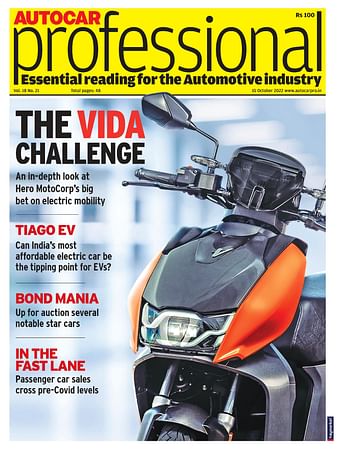Elon Musk showcases high-speed EV transport tunnel
Tesla boss says Boring Company's Loop system can transport modified autonomous EVs at speeds of up to 150mph.
Tesla boss Elon Musk’s Boring Company has unveiled a prototype underground tunnel that it says can transport autonomous electric cars at speeds of up to 150mph (241 kph).
The one-mile test tunnel in Los Angeles has been constructed to show the feasibility of The Loop, which Musk said was the “future of mass transit”.
Electric cars are modified with special tracking wheel attachments, which allow the car to be attached to a track in the tunnel. The attachment is designed to keep the car stable while travelling at high speeds, guided by its own autonomous functions. It is not clear what 'level' of autonomy such cars will need to have to use the tunnel.
The Boring Company has modified a number of Tesla Model X SUVs to test on the prototype tunnel. Musk says the system is currently capable of reaching speeds up to 110mph (177 kph), but test runs during the launch event were limited to 50mph (80 kph).
While only cars from Musk’s Tesla firm has so far been used on the tunnel, the entrepreneur said that any electric car with full autonomous capability would be able to use the system.
Musk said that each tunnel could eventually support up to 4000 cars per hour, with a number of extra cars circulating the system capable of picking up and dropping off pedestrians.
A number of reports from those who had test runs said the ride was bumpy, which Musk said was down to the short timescale to prepare the tunnel. He claimed the finished version would be “as smooth as glass.”
He added that the smaller size of the tunnels – less than 14 feet in diameter – compared to those for underground train lines (around 28 feet) meant they were cheaper and quicker to produce. Musk added that he was also investing in developing boring machinery to improve speeds.
While some transport planners have questioned the viability of the scheme, suggesting it would create bottlenecks at the entrance and exit points, Musk said the small size of such stations meant more could be installed than for a subway system. He added that, while pricing was not set, he was aiming to charge $1 (Rs 70) per trip.
The Loop is a separate project to the Hyperloop One scheme that Musk is also involved in. That concept uses a vacuum-sealed turbo to propel large autonomous pods at speeds above 600mph (965kph), the new project is designed to work with modified cars.
RELATED ARTICLES
Sept 2024 From R&D incentives to EV infrastructure: What auto components industry expects from Budget 2024
Sept 2024 From R&D incentives to EV infrastructure: What auto components industry expects from Budget 2024
US car majors hit the brakes on driverless cars
Ford Motor and Volkswagen to close self-driving startup Argo AI, due to lack of technology and clear regulations.
Autoliv and Geely to develop advanced safety tech for future vehicles
Scope of cooperation includes safety for high-level autonomous driving, intelligent steering wheel technology, a 360deg ...







 By Autocar Pro News Desk
By Autocar Pro News Desk
 20 Dec 2018
20 Dec 2018
 2907 Views
2907 Views









